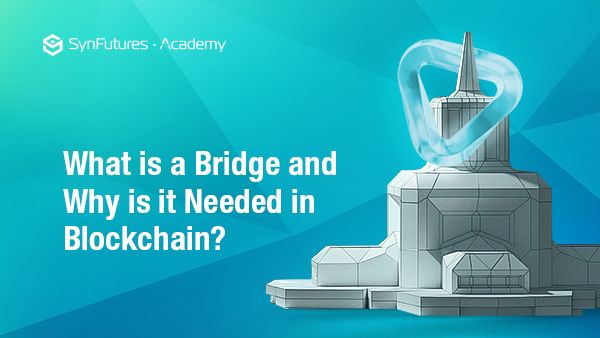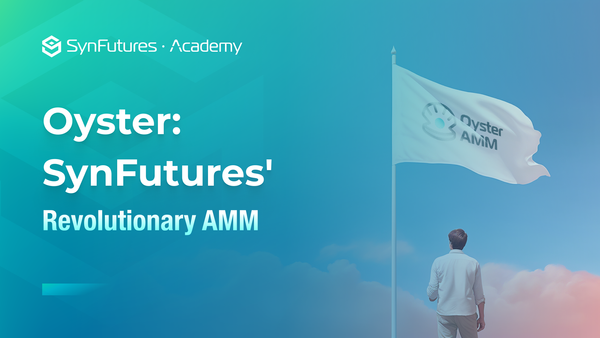What is a Bridge, and Why is it Needed in Blockchain?
Key Takeaways
- A bridging protocol allows the transfer of cryptocurrencies from one blockchain network to another.
- Most bridging protocols utilize a mint-and-burn mechanism or lock tokens up in a smart contract.
- Bridges allow for interoperability, creating new utilities for tokens and creating a connected digital currency world.
Introduction
One of the most significant constraints on the growth and development of the blockchain industry has been the inability of various blockchains to cooperate. Each blockchain has its own protocols, smart contracts, coins, and rules. Blockchain bridges assist in bridging these gaps and connecting isolated crypto ecosystems. Tokens and data can easily be exchanged between connected blockchains, which greatly enhances the experience of using cryptocurrency. A token transfer is the most typical use for a blockchain bridge. You might want to send your bitcoin (BTC) to the Ethereum network, for instance. One method is to sell your BTC and then buy WBTC (wrapped bitcoin on the Ethereum network). However, you would be subject to price volatility and transaction costs. This hindrance makes it unattractive for users to try and acquire the other asset on a different chain as they risk an immediate loss. This is where bridges come in.
Wrapped Tokens
Utilizing a blockchain bridge, you can accomplish this without selling your cryptocurrency. Simply send your bitcoin to a smart contract, and a bridging protocol’s smart contract will lock your Bitcoin and create an equivalent amount of Wrapped Bitcoin (WBTC), an ERC20 token compatible with the Ethereum network. Your Bitcoin will be locked and custodied by the bridge, and the corresponding tokens on the destination blockchain network are issued.
A wrapped token is a cryptocurrency that has been tokenized. It is usually redeemable (unwrapped) at any time and is pegged to the value of the asset it represents. However, wrapped tokens do introduce a counter-party risk, as a malfunction in the bridging protocol could lead to a decline in the wrapped token’s price.
WBTC and WFTM on the Ethereum network are good examples of wrapped tokens. BNB (Wrapped Binance Coin) and FTM (Wrapped Fantom) are cryptocurrencies that are native to their own chains (Binance Smart Chain and Fantom) and are used to pay transaction fees on their own networks. By utilizing a bridge like Multichain, users can send these tokens over to the Ethereum network as ERC20 tokens and utilize them within Ethereum’s DeFi ecosystem. These wrapped tokens are not specific to the bridge by which they are issued; they are stored in the bridging protocols reserves waiting to be distributed. This bridge has opened a pathway for liquidity to flow between the two blockchain networks and is advantageous for both networks involved.
The Wormhole Bridge
Another bridge that is available to decentralized finance users is the Wormhole bridge. This bridge is different from others in that the tokens that it issues are not considered to be wrapped, and they are specific to the bridge itself. The Wormhole bridge has connected many high-value networks like Solana, Ethereum, and Binance. The tokens that the bridge issues are known as Wormhole-X tokens, and more often than not, they must be swapped for another token before being utilized in the blockchain network. For example, when bridging USDC from Ethereum to Solana, the wormhole bridge will send your Solana wallet a special Wormhole-USDC token. This token can be swapped 1:1 for Solana native USDC at no cost, and the user can use the tokens as they wish.
The Wormhole bridge is special because it creates its own bridge-specific tokens. The tokens that it issues cannot be minted or burned by any other protocol, and therefore it is slightly safer due to fewer points of failure.
Custodial vs. Non-Custodial Bridge Risks
Custodial bridges take ownership of the tokens sent by users who wish to bridge their assets. Users of custody bridges must have faith that the system will be run effectively and securely by a single party. Users should conduct an in-depth investigation to confirm the reliability of organizations and to minimize their risks. Custodial bridges create risk since the custodian can take advantage of the tokens that they are lent. If they somehow lose funds, it will be users who have deposited that will suffer the loss.
Non-custodial bridges work decentralized, with smart contracts controlling the crypto locking and minting procedures, so there is no need to have faith in the bridge operator. In this instance, the security of the system matches that of the underlying code. Therefore any slight malfunction in the minting or burning mechanism of the bridge can lead to major negative implications. Token supplies can be diluted and dumped by a bad actor. Hackers specifically target non-custodial bridges, and it is important that users perform thorough due diligence on the platforms that they trust.
The Future of Bridging
Blockchain bridges are critical to enhancing the blockchain industry’s interoperability and encouraging mass adoption. They allow liquidity to flow from one network to another and create a connected spider web of monetary networks that spur innovation. A fully decentralized world will need bridges to enhance the user experience of Web3, and such developments will allow digital currencies to expand across the world.
Discover SynFutures' Crypto Derivatives products: www.synfutures.com/.
Disclaimer: SynFutures Academy does not guarantee the reliability of the site content and shall not be held liable for any errors, omissions, or inaccuracies. The opinions and views expressed in any SynFutures Academy article are solely those of the author(s) and do not reflect the opinions of SynFutures. The SynFutures Academy articles are for educational purposes or information only. SynFutures Academy has no relationship to the projects mentioned in the articles, and there is no endorsement for these projects. The information provided on the site does not constitute an endorsement of any of the products and services discussed or investment, financial, or trading advice. A qualified professional should be consulted before making financial decisions.




